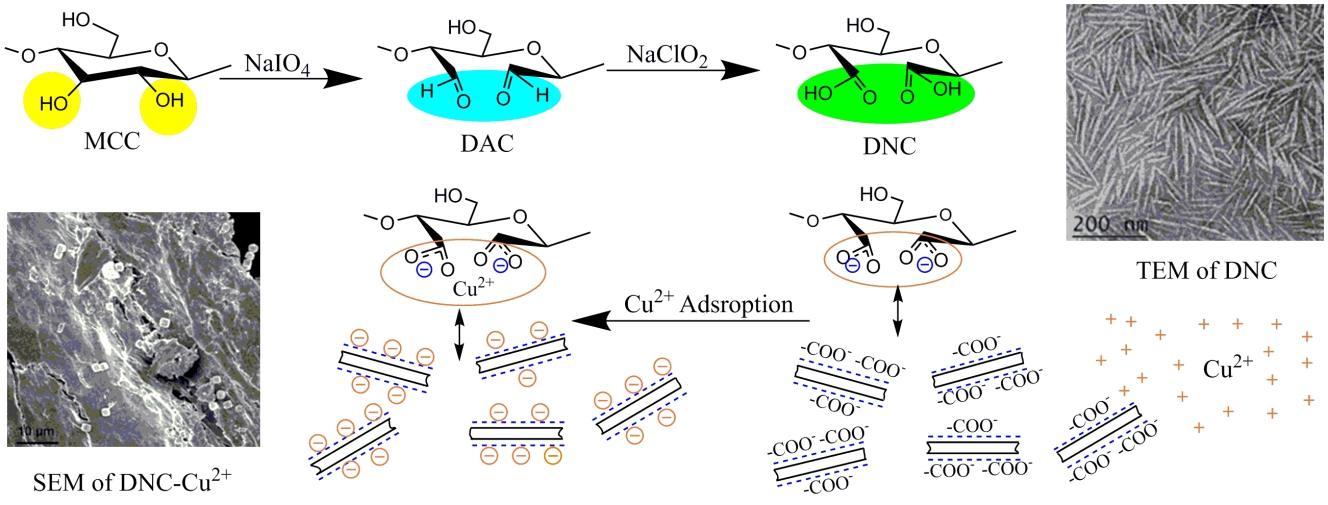 Open Access
Open Access
ARTICLE
Adsorption Properties and Cost of Dicarboxylic Nanocellulose on Copper Ions for Wastewater Treatment
1 College of Engineering, Northeast Agricultural University, Harbin, 150030, China
2 College of Mechanical Engineering, Jiamusi University, Jiamusi, 154007, China
* Corresponding Author: Xiaozheng Sun. Email:
(This article belongs to the Special Issue: Nanocellulose and Nanocellulose-Derived Functional Materials-Ⅱ)
Journal of Renewable Materials 2022, 10(3), 751-766. https://doi.org/10.32604/jrm.2022.016933
Received 21 April 2021; Accepted 21 May 2021; Issue published 28 September 2021
Abstract
The accumulation of Cu2+ in water is a potential threat to human health and environment. Dicarboxylic nanocellulose (DNC) with rich carboxyl groups was prepared through the NaIO4–NaClO2 sequential oxidation method to efficiently remove copper ions, and the Cu2+ adsorption properties and cost were studied. The maximum adsorption capacity reached 184.2 mg/g at pH 6 and an adsorbent dose of 5 g/L. Theoretically, the maximum adsorption capacities of monocarboxylic nanocellulose (MNC), DNC, and tricarboxylic nanocellulose (TNC) with carboxyl groups as the main adsorption sites were calculated to be 228.7, 261.3, and 148.1 mg/g, respectively. The Cu2+ adsorption costs of MNC, DNC, and TNC were calculated and compared with those of powdered activated carbon (PAC). The Cu2+ adsorption capacity of DNC is higher than that of PAC, and the adsorption cost is close to or lower than that of PAC, demonstrating that the DNC prepared by sequential oxidation of NaIO4–NaClO2 has competitive adsorption capacity and cost in the treatment of wastewater containing Cu2+.Graphic Abstract

Keywords
Cite This Article
Citations
 Copyright © 2022 The Author(s). Published by Tech Science Press.
Copyright © 2022 The Author(s). Published by Tech Science Press.This work is licensed under a Creative Commons Attribution 4.0 International License , which permits unrestricted use, distribution, and reproduction in any medium, provided the original work is properly cited.


 Submit a Paper
Submit a Paper Propose a Special lssue
Propose a Special lssue View Full Text
View Full Text Download PDF
Download PDF

 Downloads
Downloads
 Citation Tools
Citation Tools